Skip to main contentProvenanceThe artist
Aaron Galleries, Chicago, Illinois
Terra Foundation for the Arts Collection, Chicago, Illinois, 1993 (gift of Aaron Galleries)
Exhibition HistoryPublished References
Emil Bisttram
(American, 1895–1976)
Mother Earth
1940
Crayon, colored pencil and graphite on tan wove paper
Image: 17 1/2 x 11 1/2 in. (44.5 x 29.2 cm)
Mat: 23 1/8 x 17 7/16 in. (58.7 x 44.3 cm)
Mat: 23 1/8 x 17 7/16 in. (58.7 x 44.3 cm)
Credit LineTerra Foundation for American Art, Gift of Aaron Galleries
Object numberC1993.26
SignedLower right: BISTTRAM/40
InterpretationEmil Bisttram's Mother Earth is a flat, symmetrical design of two interlocked circular forms, each with a flower-like radiating center and surrounded by a broadly striped halo. At the edges of the composition, graduated shading suggests an aura of light surrounding the central design, suspended in space like a mystical vision. The drawing medium allows for a subtly textured effect that announces the hand-made character of the work, otherwise impersonal in its rather cryptic non-representational forms.
Bisttram's title reveals possible readings of what otherwise appears a simple random arrangement of shapes and colors organized only according to principles of contrast and symmetry. The relative size of the spheres and their relationship, with the larger above and overlapped by the smaller, evokes a mother-and-child pairing, and the generative earth-green field at the center of the "parent" is complemented at the center of the "child" by the densely cobbled effect, like heads in a crowd, perhaps signifying life animating earth's nurturing surface.
The concept of earth as a generous mother of life is found in many cultures, including the Native American communities of the American Southwest, where Bisttram took up residence in 1932. He painted representational images of indigenous rituals and, beginning in the 1930s, created non-representational art in which he attempted to give form to universal spiritual ideas. Mother Earth seems to make reference to no specific creation myth or to Indian symbolism. Rather, its flat symmetricality, bold color contrasts, and centralized organization recalling star or flower forms all echo the stylized geometric designs, popularly known as hex signs, common in the decorative arts of German immigrants who settled in the mid-Atlantic states, especially Pennsylvania, by the early nineteenth century. As with hex signs, the precise meaning of the artist's design is open to interpretation. Mother Earth, like Bisttram's Dancing Figures (TF C1993.27) draws on ancient symbols that are powerfully universal.
Bisttram's title reveals possible readings of what otherwise appears a simple random arrangement of shapes and colors organized only according to principles of contrast and symmetry. The relative size of the spheres and their relationship, with the larger above and overlapped by the smaller, evokes a mother-and-child pairing, and the generative earth-green field at the center of the "parent" is complemented at the center of the "child" by the densely cobbled effect, like heads in a crowd, perhaps signifying life animating earth's nurturing surface.
The concept of earth as a generous mother of life is found in many cultures, including the Native American communities of the American Southwest, where Bisttram took up residence in 1932. He painted representational images of indigenous rituals and, beginning in the 1930s, created non-representational art in which he attempted to give form to universal spiritual ideas. Mother Earth seems to make reference to no specific creation myth or to Indian symbolism. Rather, its flat symmetricality, bold color contrasts, and centralized organization recalling star or flower forms all echo the stylized geometric designs, popularly known as hex signs, common in the decorative arts of German immigrants who settled in the mid-Atlantic states, especially Pennsylvania, by the early nineteenth century. As with hex signs, the precise meaning of the artist's design is open to interpretation. Mother Earth, like Bisttram's Dancing Figures (TF C1993.27) draws on ancient symbols that are powerfully universal.
Aaron Galleries, Chicago, Illinois
Terra Foundation for the Arts Collection, Chicago, Illinois, 1993 (gift of Aaron Galleries)
Exhibition History
Manifest Destiny, Manifest Responsibility: Environmentalism and the Art of the American Landscape. Terra Foundation for American Art, Chicago, Illinois and Loyola University Museum of Art, Chicago, Illinois (organizers). Venue: Loyola University Museum of Art, May 17–August 10, 2008. [exh. cat.]
Cartwright, Derrick R. and Paul J. Karlstrom. American Moderns, 1900–1950. (exh. cat., Musée d'Art Américain Giverny). Chicago, Illinois: Terra Foundation for the Arts, 2000. Ill. no. 15, p. 70 (black & white).
Cartwright, Derrick R. and Paul J. Karlstrom. L'Amérique et les modernes, 1900–1950. (exh. cat., Musée d'Art Américain Giverny). Chicago, Illinois: Terra Foundation for the Arts, 2000. Ill. no. 15, p. 70 (black & white).
Brownlee, Peter John. Manifest Destiny / Manifest Responsibility: Environmentalism and the Art of the American Landscape. (exh. cat., Loyola University Museum of Art, Chicago, Illinois). Chicago, Illinois: Terra Foundation for American Art and Loyola University Museum of Art, 2008. Text pp. 31, 34 (checklist); Ill. Pl. 17, p. 53 (color).
Cartwright, Derrick R. and Paul J. Karlstrom. L'Amérique et les modernes, 1900–1950. (exh. cat., Musée d'Art Américain Giverny). Chicago, Illinois: Terra Foundation for the Arts, 2000. Ill. no. 15, p. 70 (black & white).
Brownlee, Peter John. Manifest Destiny / Manifest Responsibility: Environmentalism and the Art of the American Landscape. (exh. cat., Loyola University Museum of Art, Chicago, Illinois). Chicago, Illinois: Terra Foundation for American Art and Loyola University Museum of Art, 2008. Text pp. 31, 34 (checklist); Ill. Pl. 17, p. 53 (color).


